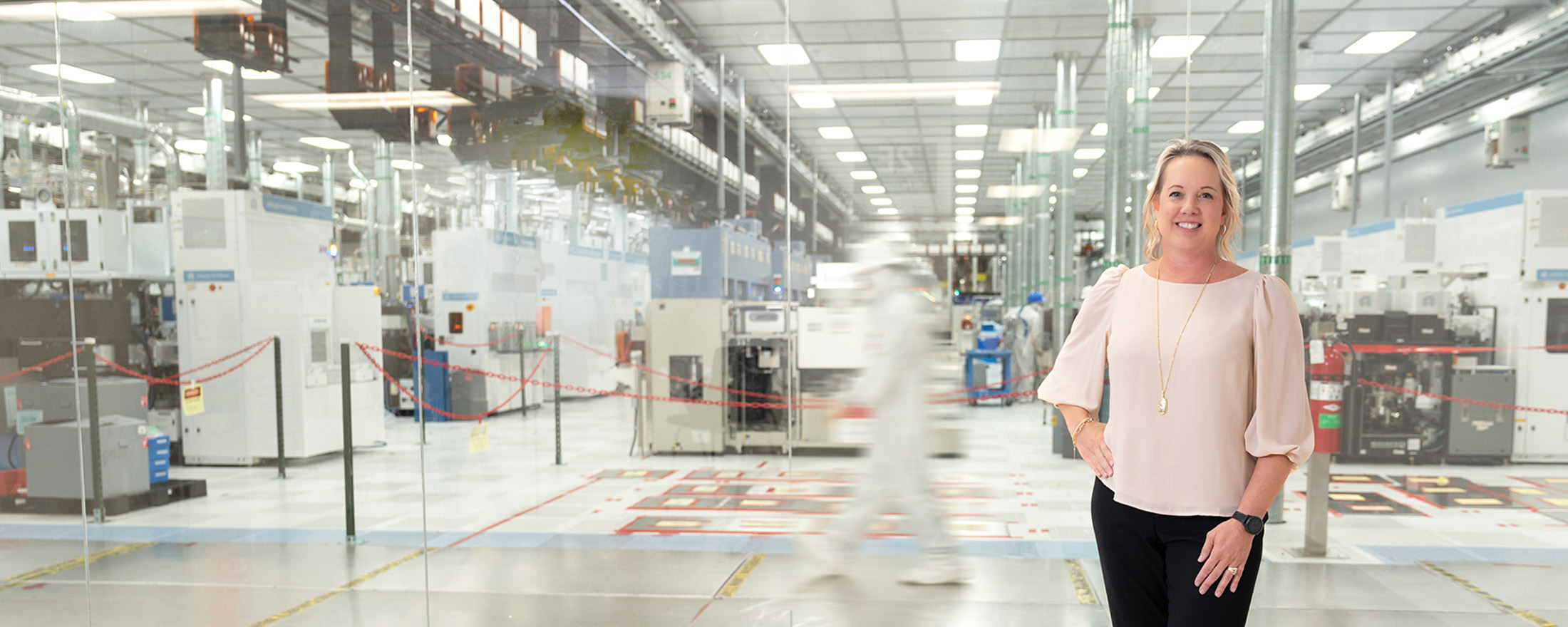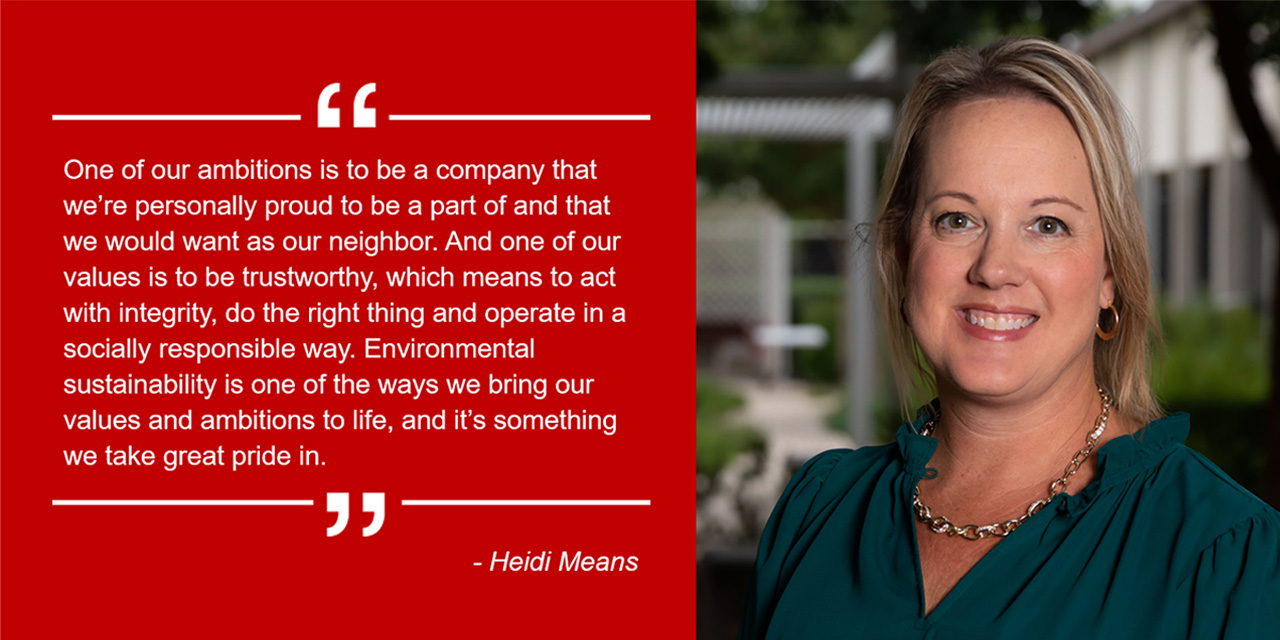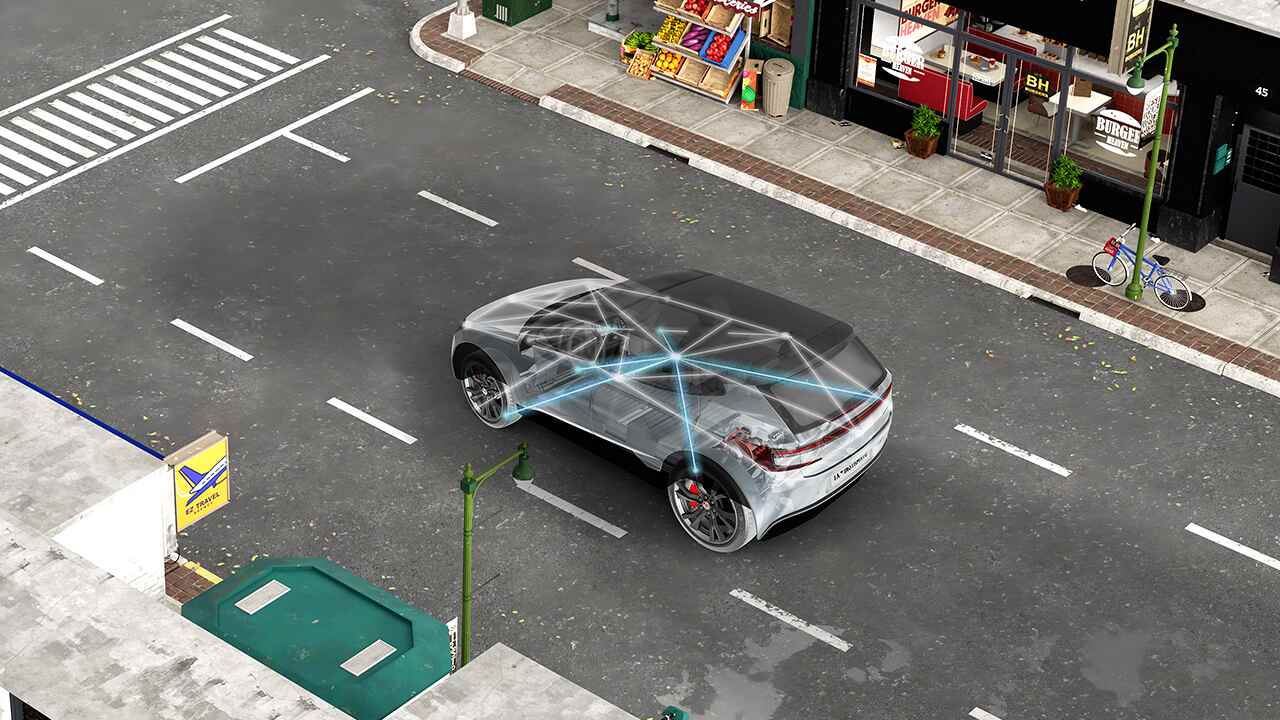The leader of our Worldwide Environmental, Safety and Health team shares our company’s long history of environmental sustainability and how we’re reducing our environmental impact

Our company has had a focus on reducing our environmental impact for decades. We set – and achieve – our sustainability goals, which range from creating efficiencies in manufacturing to reducing greenhouse gas emissions (GHG) and more.
And the impact is significant. Since 2015, as reported in our 2022 Corporate Citizenship Report, we have reduced GHG emissions by 23% and the energy used to make each integrated circuit by 28%. Annually, we avoid millions of gallons of water use through conservation projects and divert 90% of waste from going to landfills.
Heidi Means, vice president, Worldwide Environmental, Safety and Health, recently discussed our long history of environmental responsibility and the steps we’re taking to reduce our environmental impact as part of our sustainability strategy.
Question: Why is environmental sustainability important to TI?
Heidi Means: One of our ambitions is to be a company that we’re personally proud to be a part of and that we would want as our neighbor. And one of our values is to be trustworthy, which means to act with integrity, do the right thing and operate in a socially responsible way. Environmental sustainability is one of the ways we bring our values and ambitions to life, and it’s something we take great pride in.
So, as a global company that manufactures billions of chips every year, we have a responsibility to society to operate in an environmentally friendly manner. We want to conduct our business in a way that protects the environment and the health and safety of our employees, our customers, and the communities where we live and operate.
Question: Where is TI focused when it comes to reducing its environmental impact?
Heidi: Our ambitions guide how we run our business and are foundational to ensuring that we operate in an environmentally thoughtful manner with a mindset of continuous improvement.
As part of our decades-long journey to create a more sustainable future, we continue to take steps to reduce our environmental impact. This includes reducing greenhouse gas emissions, which trap heat in the environment and cause the planet to warm. Last year, TI implemented hundreds of projects across the company to reduce energy, material and water consumption, and greenhouse gas emissions, and we continue to invest in new technologies and innovations that lessen our environmental impact at our manufacturing sites. For example, between 2018 and 2022, our energy reduction projects saved an estimated combined annual energy consumption of 320 gigawatt hours, roughly equal to the consumption of 30,000 typical U.S. homes.1
Looking ahead, as we grow our manufacturing capacity, our multi-year sustainability efforts to reduce energy use, greenhouse gas emissions, water use and the generation of landfill waste will continue to guide our work.
Question: Where do our greenhouse gas emissions come from, and what are we doing to reduce scope 1 and scope 2 emissions?
Heidi: To answer that question, it’s important to understand that our strategy is to invest in increasing our internal manufacturing capacity – in wafer fabs and assembly-test sites we own – rather than relying only on external suppliers. As we grow our capacity and increase production, owning our manufacturing gives us an advantage of having greater control of our environmental sustainability results, especially scope 1 and 2 emissions.
One area of the manufacturing process that we’re focused on is the scope 1 emissions from the gases and chemicals used to make semiconductors. We’ve been investing to reduce these emissions for years by using alternative gases and chemicals that have a lower global warming potential, purchasing advanced manufacturing tools and technologies, and installing thermal point-of-use abatement devices on some tools that treat the exhaust gases used in semiconductor manufacturing.
Another source of greenhouse gas emissions is from the electricity we use to keep our factories and other sites operating, which represent scope 2 emissions. We continue to invest in electricity from renewable sources, as well as taking actions to optimize our manufacturing, shipping and distribution operations.

Even longer-term, we are members in several industry consortia that fund research for the sustainability innovations of tomorrow, including chemical, technology and abatement initiatives.
Question: As TI continues to increase its manufacturing capacity, how are we making our newest sites more sustainable?
We are designing and equipping our new factories and offices to be as efficient and sustainable as possible and to achieve LEED (Leadership in Energy and Environmental Design) certification. LEED is the world’s most widely recognized green building rating system.
RFAB in Richardson, Texas, for example, was the world’s first green, LEED Gold-certified semiconductor manufacturing facility. Nearly a decade later, RFAB2 represents our fourth and most recent LEED-certified manufacturing plant. It is the first wafer fab in the United States and the fourth in the world to achieve LEED Gold v4 certification, a more stringent certification from the U.S. Green Building Council for the sustainable design, construction and operation of high-performance green buildings. RFAB2 is expected to save 750 million gallons of potable water and almost 80,000 megawatt-hours of energy annually. The factory was also constructed using responsibly sourced materials and was designed and built in a way that fosters a healthy work environment.
Question: In 2022, TI used more electricity from renewable energy sources than ever before. What are our plans for the future use of renewable energy?
Heidi: Over the past few years, we have incrementally been using more electricity from renewable sources and are committed to increasing the use of renewable electricity in the coming years as part of our efforts to reduce greenhouse gas emissions. For example, in 2022, we began receiving 47 megawatts of solar power for our North Texas operations and, in 2023, we added 18 megawatts of wind power. We also have begun using a rooftop solar system at our office in Bangalore, India, that provides some of the site’s power needs. We continue to look at factors such as location, investment requirements, scale and timing when we consider opportunities for using renewable electricity.
Question: Looking beyond what we as a company do to improve sustainability, what role do the semiconductor devices our company designs and manufactures play in improving the environment?
Heidi: The opportunities for our products to reduce the amount of energy used is significant in just about every application – from air conditioners and washers and dryers to saving power in data centers. Semiconductors enable the future of energy in new ways as our customers innovate to improve sustainability. For example, our products enable next-generation electric vehicles with longer range than ever before, and solar and energy storage systems that can intelligently manage energy from the grid to consumers.
We’re also helping companies leverage TI technology to create more sustainable energy ecosystems that capture, convert, and distribute energy more effectively and efficiently – accelerating the transition from fossil fuels to renewable energy sources.
It’s exciting to think about all the different ways our semiconductor products are playing – and will increasingly play – a critical role in helping reduce the impact on the environment.
1See “How much electricity does an American home use?” 13 Sept. 2023 (U.S. Energy Information Administration)

